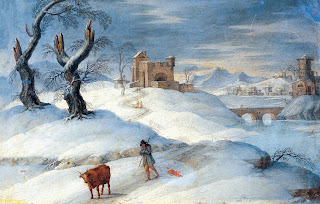Whenever we see an accurate depiction of pirates, there is always
tobacco near at hand. Whether it be a long clay pipe or a thin black cigar,
pirates – like many European of the time – loved to smoke. And since tobacco
was still a luxury item in the early 1700’s, it was a habit taken up both to
enjoy amd to show off affluence. This made it especially popular with pirates,
who had often moved from deep poverty to sudden wealth.
Smoking is an unusual way of ingesting a drug. At the time
of the European invasion in the 1500s, smoking was found only in the Americas
and in a few parts of Africa. Europeans were unfamiliar with this activity and
were, at times, amazed when they encountered it.
Tobacco grows wild in many parts of the Americas and
archaeological evidence suggests that Natives in the Andes mountains of South
American had begun to cultivate tobacco about 7,000 years ago. The practice of
growing tobacco spread north into the tribal traditions of what is now the United
States and Canada and out to the Caribbean Islands. When Christopher Columbus
and his men struck land in the Caribbean, they became first Westerners to see
people smoking tobacco. A 16th century Spanish historian vividly
described how the first scouts sent by Columbus into the interior of Cuba found:
men
with half-burned wood in their hands and certain herbs to take their smokes,
which are some dry herbs put in a certain leaf, also dry, like those the boys
make on the day of the Passover of the Holy Ghost; and having lighted one part
of it, by the other they suck, absorb, or receive that smoke inside with the
breath, by which they become benumbed and almost drunk, and so it is said they
do not feel fatigue. These, muskets as we will call them, they call tabacos. I
knew Spaniards on this island of Española who were accustomed to take it, and
being reprimanded for it, by telling them it was a vice, they replied they were
unable to cease using it. I do not know what relish or benefit they found in
it.
The Europeans were immediately fascinated, and traded with the
natives for this captivating new plant. One of Columbus' lieutenants was so drawn to
primitive cigar smoking that he smoked every single day on the long journey back
home. Because the natives of the Caribbean smoked tobacco in cigar form, cigars
and the Spanish have been linked ever since.
Cigar smoking became quite popular in Spain and Portugal.
The French ambassador to Portugal, picked up the habit and brought cigars back
in his home country. From there it spread to Italy and other European nations. While
some rulers such as King Phillip II of Spain and King James I of England
denounced smoking as being evil, the cigar grew in popularity as companies
started growing tobacco for commercial consumption.
It is important to remember that tobacco can be used by in
many different ways. It can be sniffed, chewed, eaten, smeared on the skin,
drunk, used in eye drops and enemas, and smoked. Europeans began smoking
because that was the usage they saw. Taken in small doses, tobacco has a mild
effect on those who use it. However, taken in large doses it can produce
hallucinations, trances, and even death.
For the natives of North America, tobacco was a spiritual herb.
As long as 3,000 years ago, the people living around North America’s Great
Lakes were smoking tobacco in pipes. For these people, every act of smoking a
pipe contained some measure or ritual. When the pipe was first lit, it would be
offered to the directions (four, six, or seven, depending on the culture.)
When asking the advice of an elder it was (and still is)
customary to give the elder tobacco. When gathering wild plants for ceremonial
use, one left a small offering of tobacco for the spirits of the plants. In
preparing the fire for the sweat lodge, tobacco offerings are given to the
fire.
The tribes of North America most commonly used tobacco by
smoking it in a pipe. Indians used pipes made from many different materials in
a variety of shapes. The one we now best is the Plains Indian “peace” pipe with
its stone bowl and long wooden stem. But the Indian people in the eastern part
of the United States frequently made pipes from clay. It was this clay pipe
which the English copied when they first began to smoke tobacco. And the clay
tobacco pipe was the standard for English and Dutch pirates.
Tobacco was an early fad in European and cultivation of the plant
was one of the driving forces for profit that helped to encourage immigration to
the New World. Huge profits could be made in the weed. The cultivation of
tobacco as a cash crop in America marked a shift from a subsistence economy to
an agrarian economy. Tobacco’s value led to it being used as a currency in
colonies. Tobacco was also backed by the gold standard which meant that there
was an established conversion rate from tobacco to gold.
But this led to changes. In the beginning, plantations that
grew tobacco used indentured servants to cultivate the crop. But this sort of
farming requires large amounts of land and labor. Early indentured servants were promised land
grants in exchange for their years of service – but when their time was up,
landowners did not want to part with such profitable land.
One answer was to find ways to deny indentured servants
their due. Another was to search for a fresh source of labor that would be
permanent and not require land as a reward. Tobacco in North America, like sugar
in the Caribbean, drove unfair labor practices and the need for slaves.
Next week… Tobacco as cash.





























